Year |
Model |
Ad |
Unit in Museum collection |
Specifications |
| |
| 1950's |
Ampex / Irish / Shamrock/Quantegy magnetic recording tape
|

|
|
Our collection includes an unopened box of Irish magnetic reel to reel recording tape from Opilika, Alabama.
|
| |
Ampex and Orradio Industries
The following information was accessed from a variety of sources.
In 1945, Orr was among the U.S. Army Intelligence officials who investigated this technology, which was originally developed in Germany during the 1930s. According to one story, in 1945, General Dwight D. Eisenhower wanted to record a message to the German people, which he did using captured German tape. However, the tape had not been completely erased, and Hitler's voice, so the story goes, could be heard intermittently along with that of Eisenhower. Eisenhower ordered that no more captured tape could be used, and ordered Major John Herbert Orr to use captured German scientists to set up an American tape manufacturing facility.
Paper tape was the medium in use at the time, but the German engineers had been experimenting with a plastic based tape; they provided Major Orr with the data on this and it became the basis of the modern audio and video recording industry. When the German engineers gave Orr their studies on plastic tape, the only place in Europe manufacturing the material was a factory making ladies imitation leather purses.
The company was created at the end of World War II by Major John Herbert Orr as Orradio Industries. Initially the company was going to build and sell reel to reel tape recorders, however they switched over to manufacturing magnetic tape in 1948. This was a result of the US Army requiring an American supplier of magnetic tape. Magnetic tape was a German invention and after the war, the German manufacturing ability was destroyed.
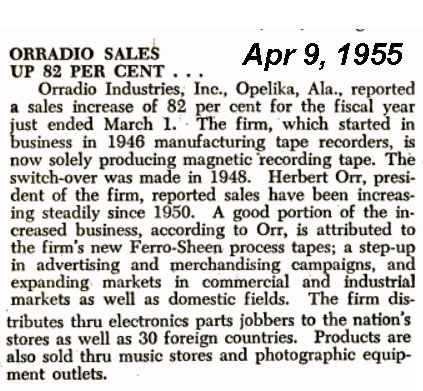
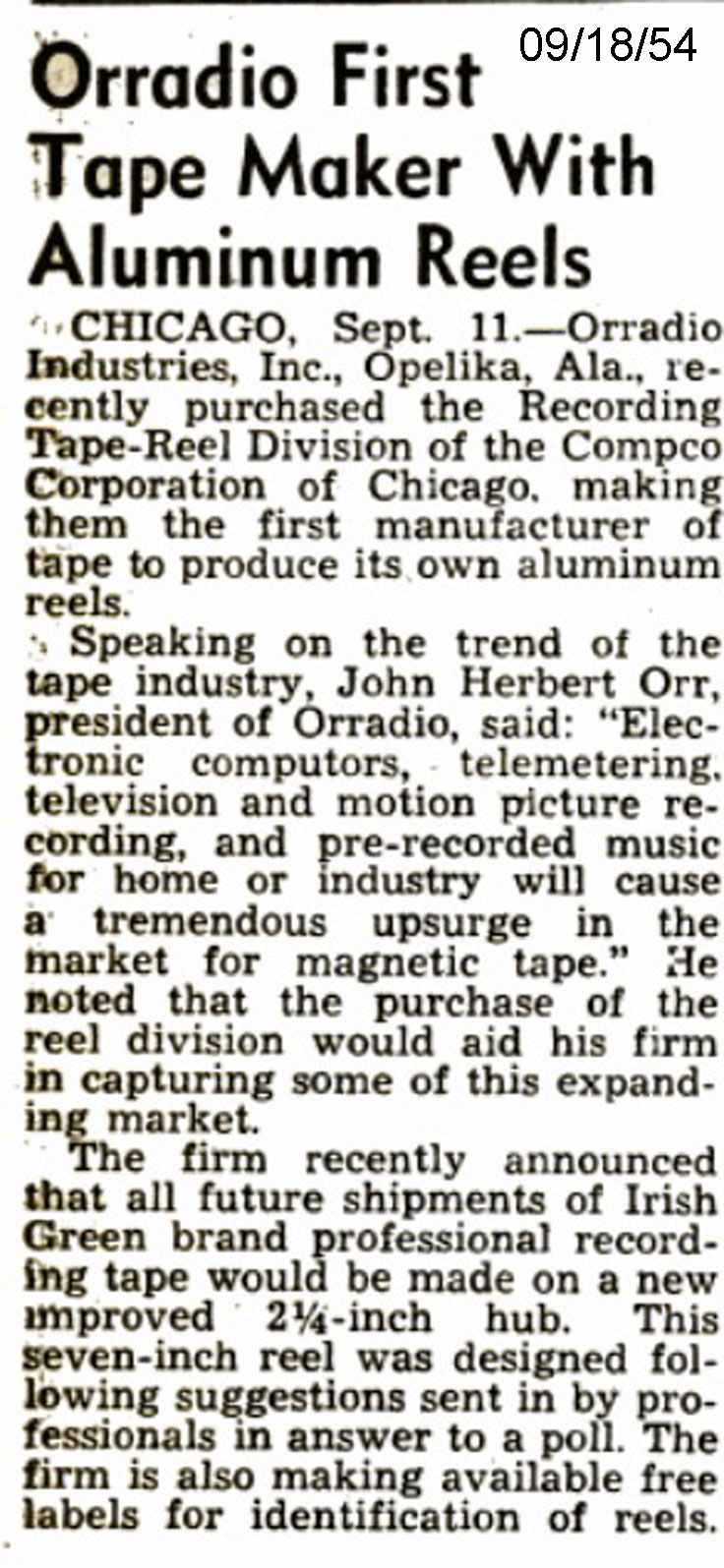 1954 Orradio became the first tape manufacturer to build their own metal reels after the acquisition of the Recording Tape-Reel Division of Compco Corporation of Chicago
1954 Orradio became the first tape manufacturer to build their own metal reels after the acquisition of the Recording Tape-Reel Division of Compco Corporation of Chicago
1955 The ORRadio Industries, Opelika, Ala., is introducing a new magnetic recording tape that will double the playing time over standard recording tape,
1957 All Irish brand tape on 7-in. reels is now delivered on the new reel, without extra charge. TIME CHART showing playing time of standard lengths of magnetic recording tape is offered free by ORRadio Industries, Inc., Shamrock Circle, Opelika, Alabama.
1958 New ORRadio Plant Opens "this plant was built to turn out magnetic recording tape of the highest possible quality." That was the statement from J. Herbert Orr, founder and president of ORRadio Industries, Inc.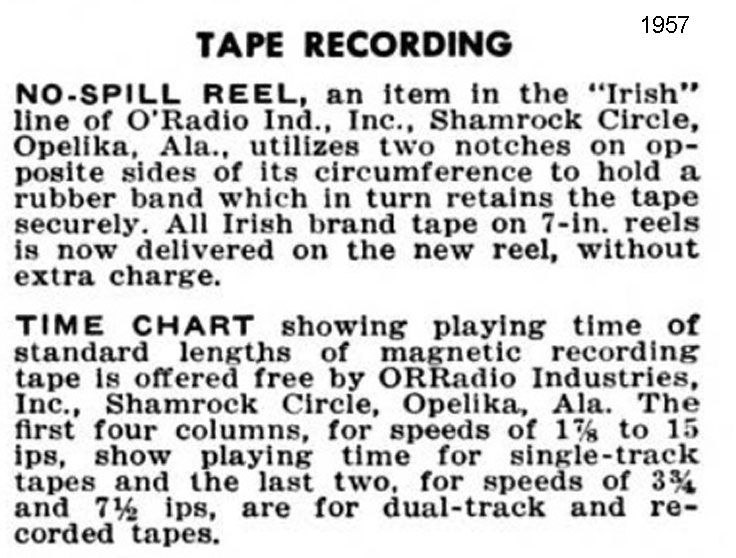
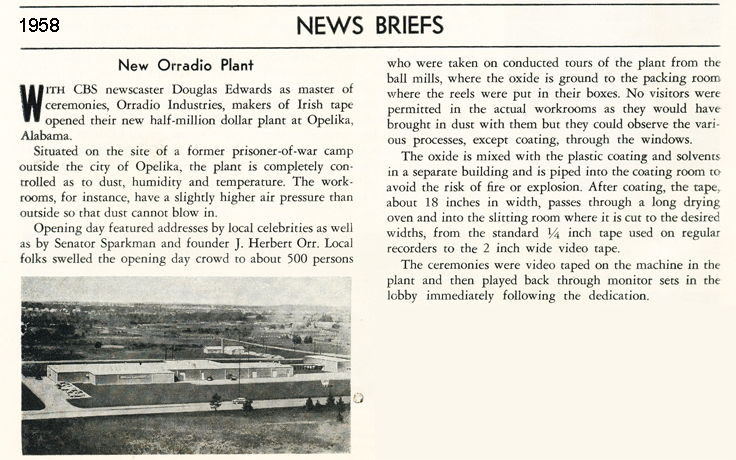
In 1959, Ampex acquired Orradio Industries and it became the Ampex Magnetic Tape Division.
Orr then founded OrrTronics, which developed the lubricated tape used in closed loop tape systems. The system, called the "Orrtronic Tapette", was produced in versions for home, commercial, and automotive use, and was offered as a prize on television game shows. Evolving from a single track mono design (which stayed in production as the radio station "cart") through two-track mono and stereo versions.
OrrTronics was then sold to Delco Battery and Orr formed Orrox Corporation, which specialized in hard disc drive controllers, refurbishing of Quadruplex videotape recorder heads, and computerized video tape editing systems for TV broadcasters and post-production houses. The latter product, CMX Systems, was for many years the preferred editing system for 80% of all television programming originating on videotape.
Orr retired from Orrox in 1976 and founded Orr Proprietorship, which transcribed recorded media, from early cylinder recordings to 1960s tape recordings, onto modern tape for preservation.
 1981 Ampex drops consumer blank tape production under deal with Japan's Konishiroku Photo Industry Co, Ltd.
1981 Ampex drops consumer blank tape production under deal with Japan's Konishiroku Photo Industry Co, Ltd.
Orr died of a heart attack in 1984 while on a Sunday afternoon drive with his sister.
In 1995, Ampex divested this division, then called the Ampex Recording Media Corporation. At the same time, 3M was also spinning off its magnetic media division. Equitable Life Insurance acquired these combined entities, which became Quantegy, Inc., and later changed its name to the current Quantegy Recording Solutions, with the Ampex product line being the nominal survivor, although much use of the 3M technologies later found their way into Quantegy products including the high end GP9 tape.
In January 2005, having previously filed for bankruptcy protection, Quantegy closed its manufacturing facility in Opelika. This event received substantial media attention.
On April 18, 2005, Quantegy resumed operations under new ownership.
In January 2007, Quantegy announced that it will cease production of magnetic tape in April 2007 and is taking orders up until February 22. The only remaining manufacturers of new magnetic tape for sound recording are RMGI and ATR Magnetics.
In April 2007, Reel Deal Pro Audio purchased the majority of Quantegy's reel to reel audio  tape and accessories and began to sell it on their web site Reel Deal Pro Audio.
tape and accessories and began to sell it on their web site Reel Deal Pro Audio.
In June 2007, Quantegy ceased sales of the FHD and Black Diamond FHD3 series of hard drive products to the professional audio recording industry.
As of 2009 Quantegy was working on reviving Quantegy 456 Studio Mastering Tape, Quantegy 499 Gold Studio Mastering Tape, GP9 Platinum Studio Mastering Tape, as well as the Black Diamond Series of products. But as of 2012, no progress had been made. Most of the tape production facilities were sold or dismantled following the 2007 bankruptcy. Thus a third revival of [new] Quantegy products looks to be in much doubt. - Wikipedia

1952
|
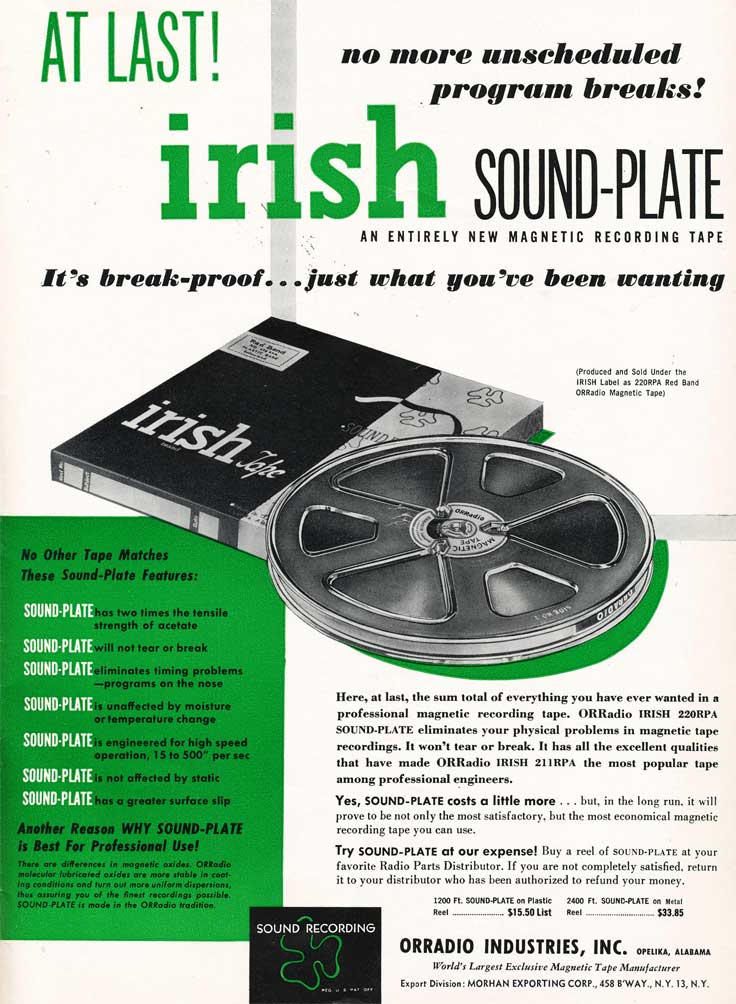
1953
|
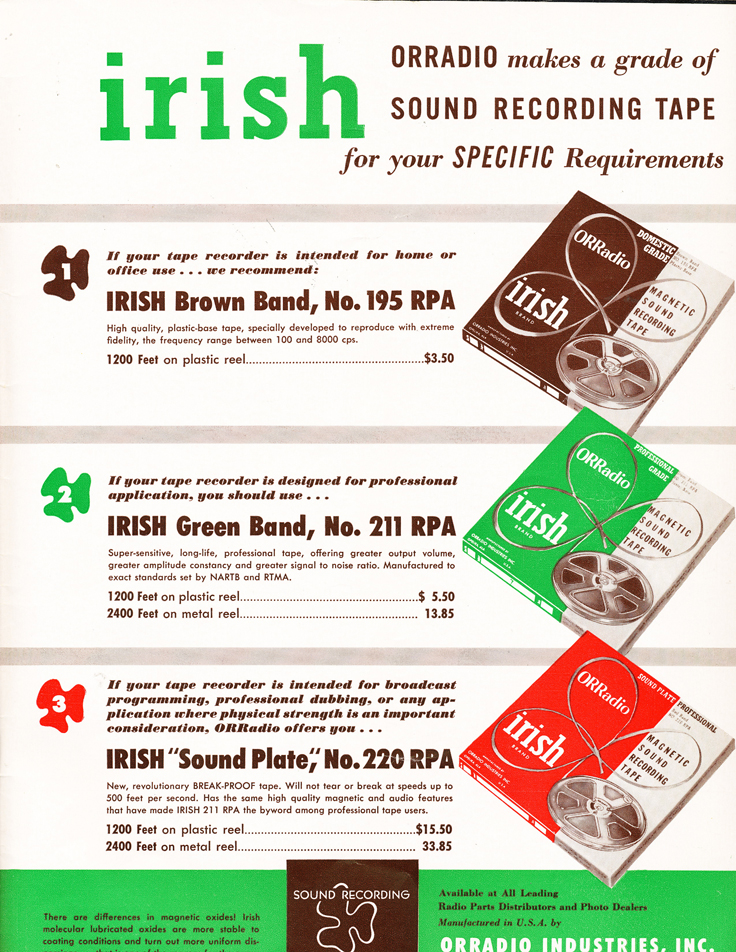
1953
|
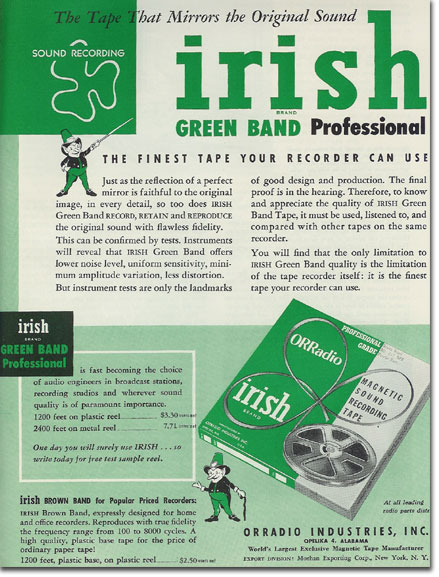
1954
|
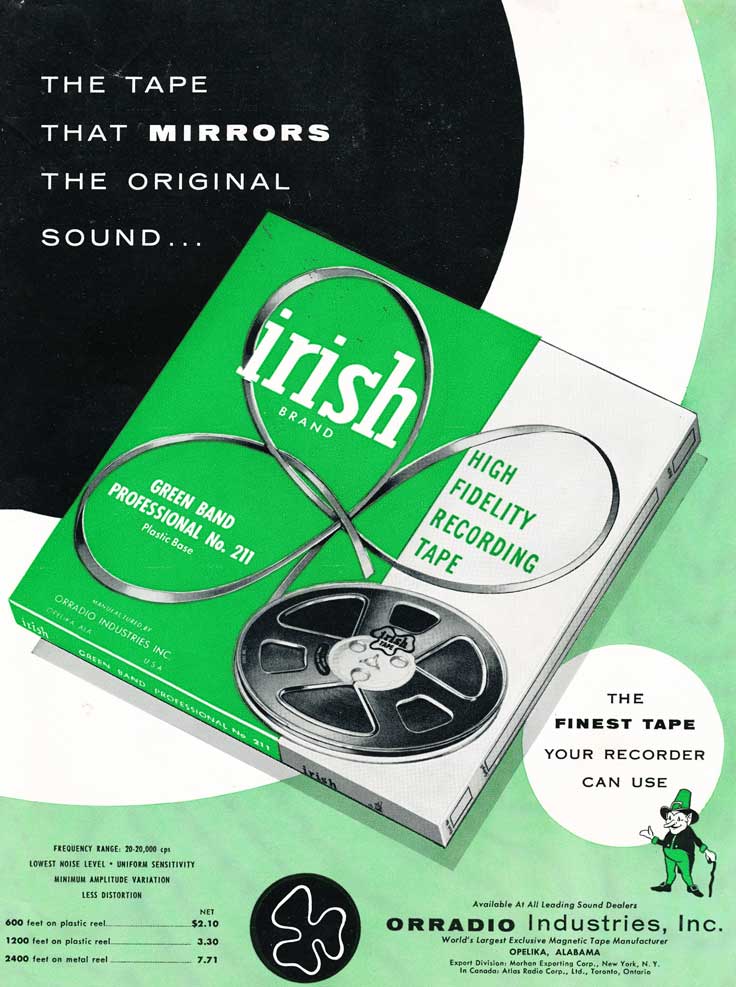
1954
|

1955
|

1955
|

1955
|
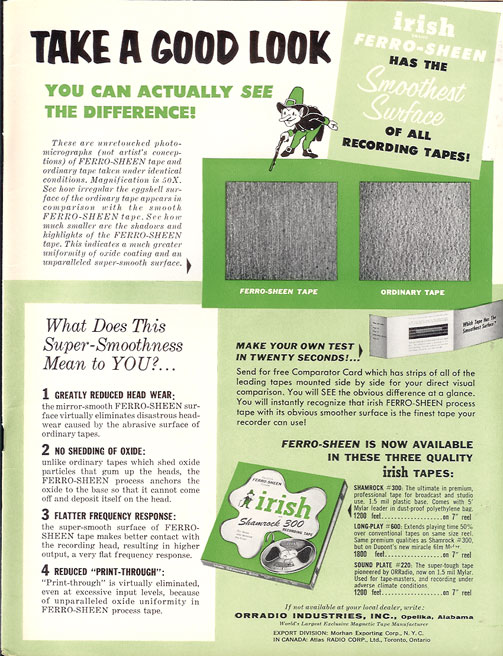
1956
|
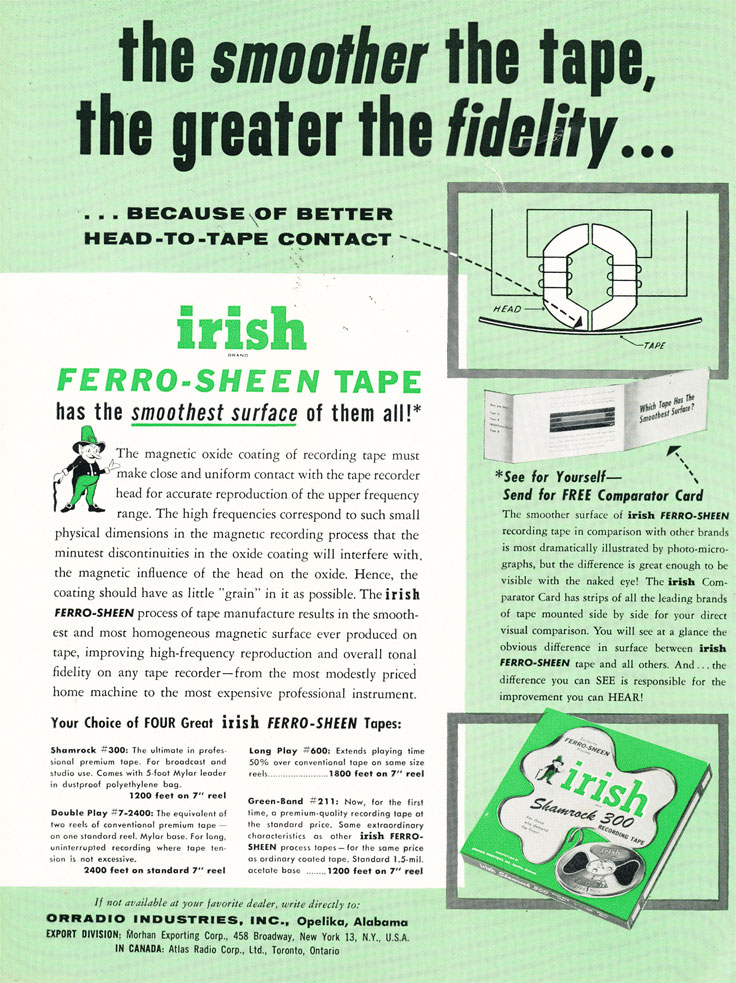
1956
|
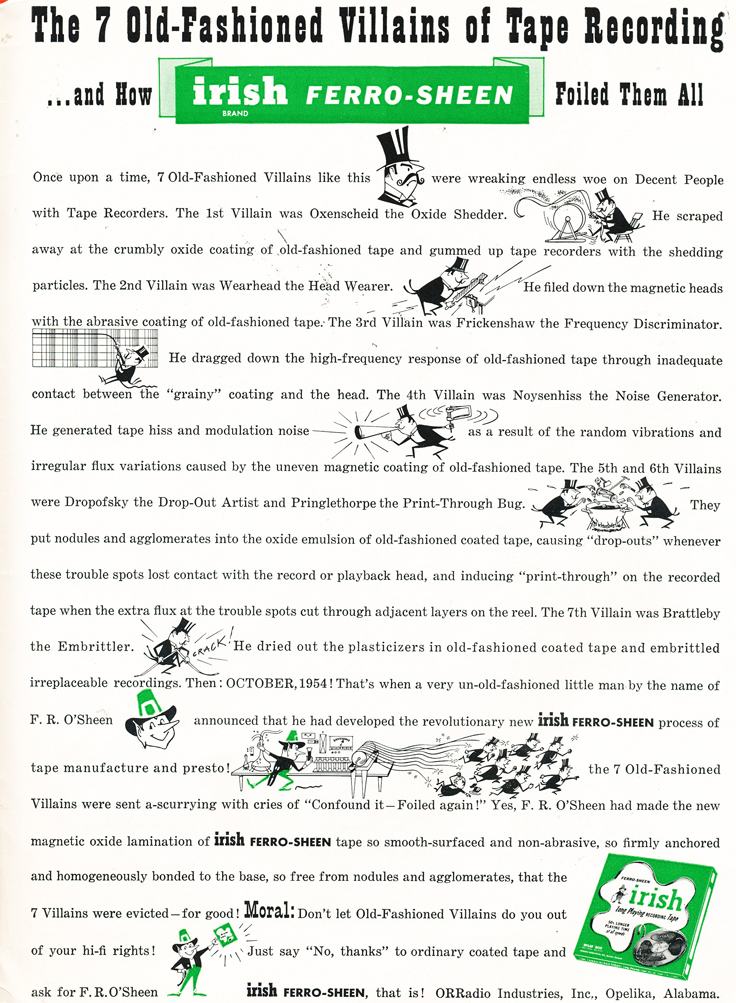
1956
|

1956
|
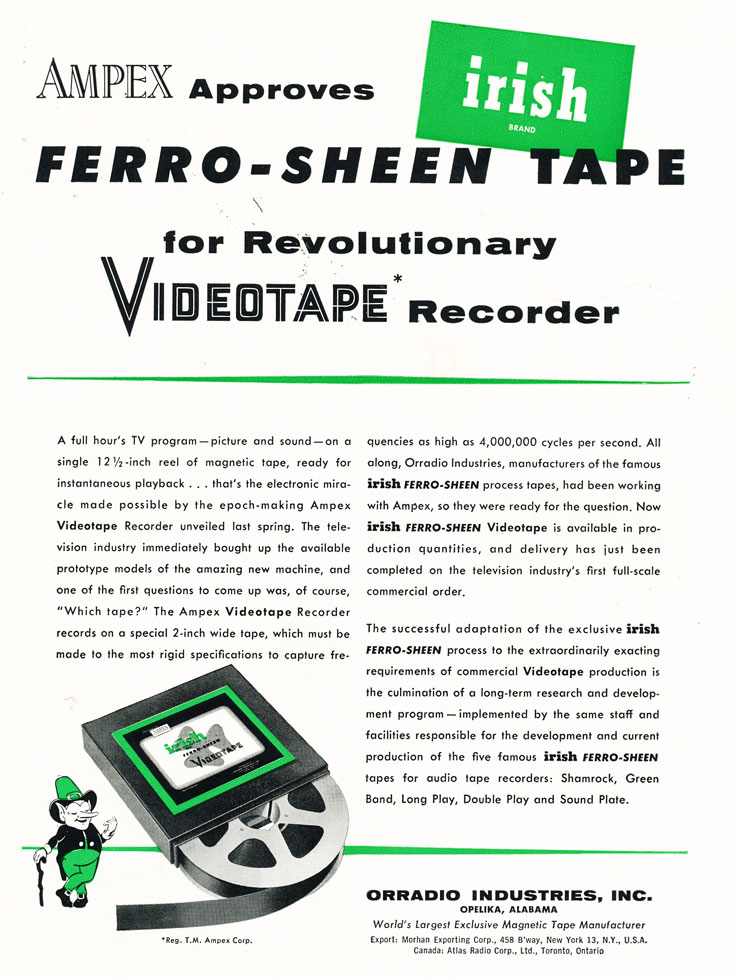
1956
|
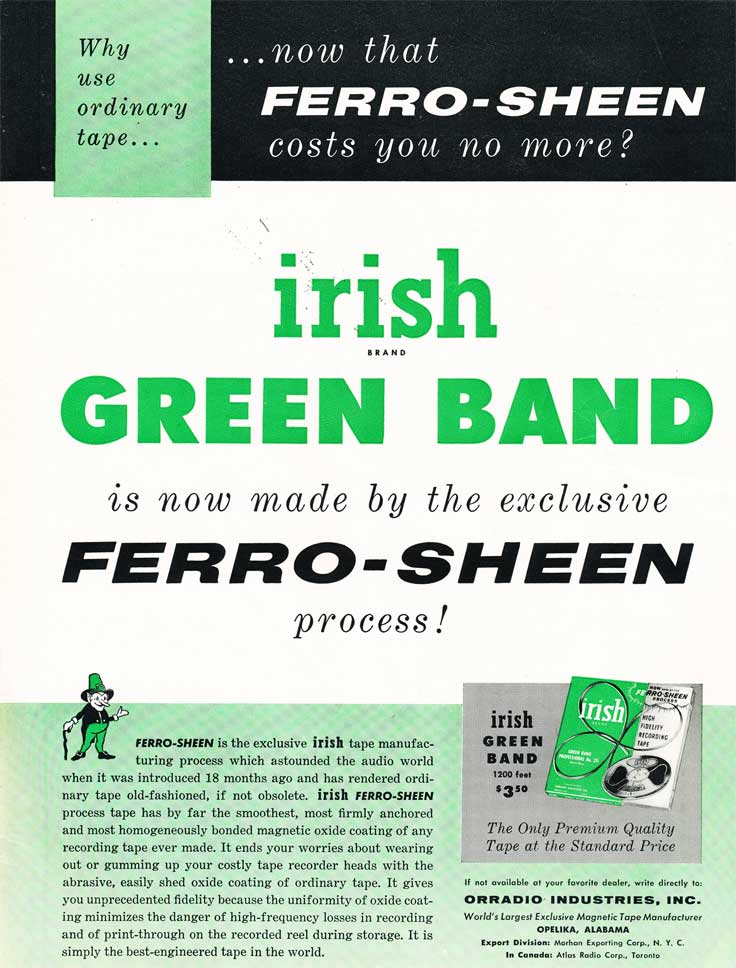
1956
|
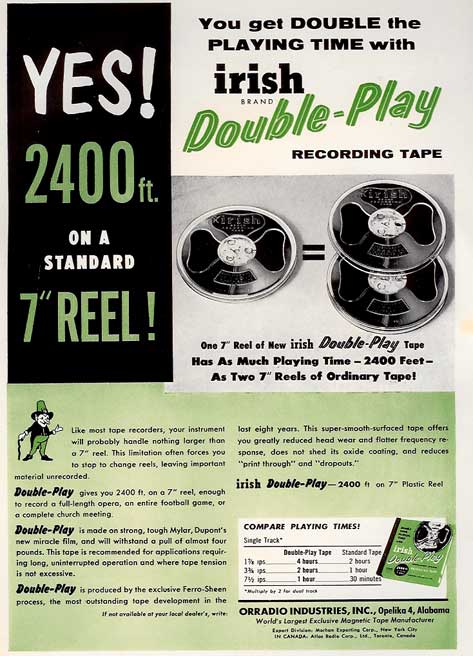
1957
|
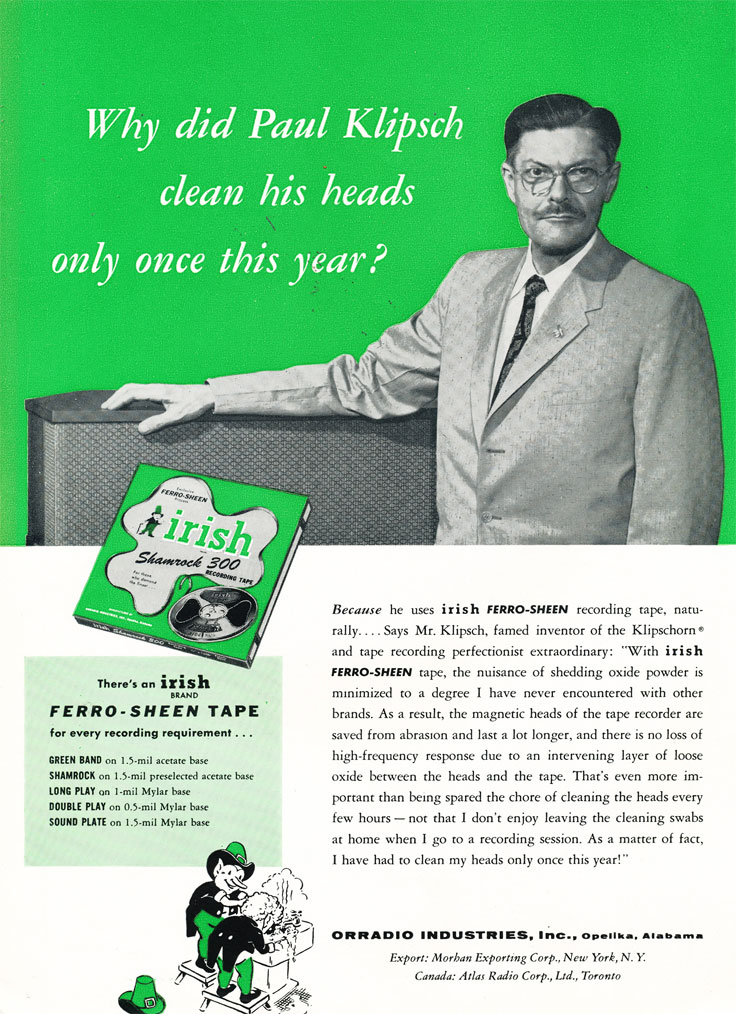
1957
|
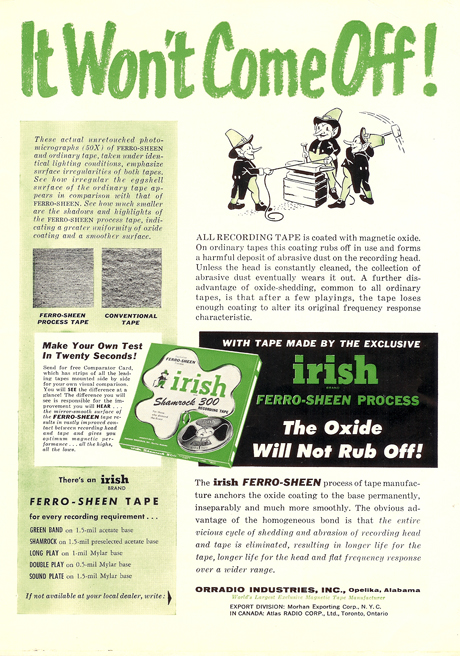
1958
|

1958
|
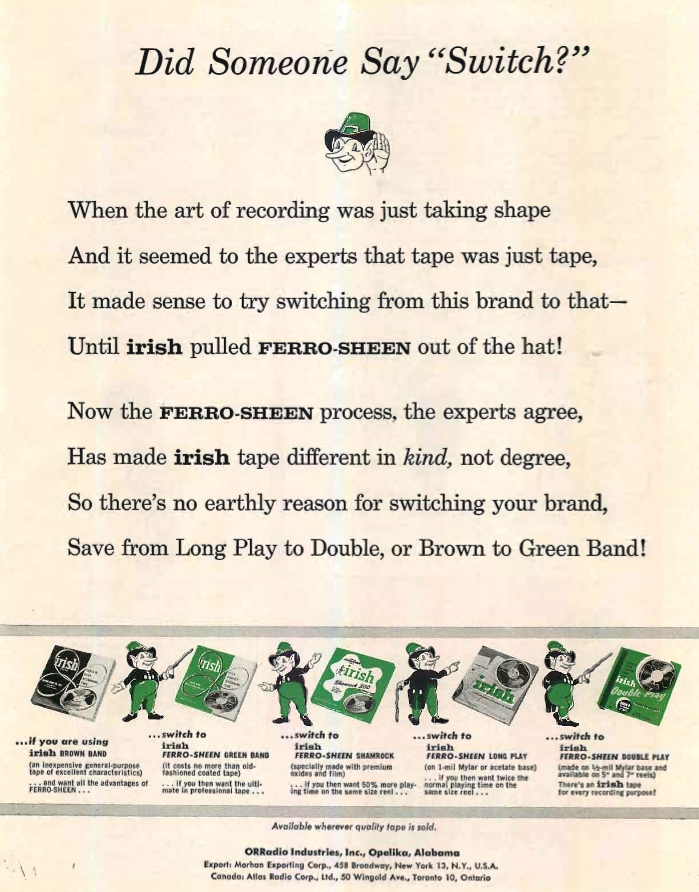
1958
|
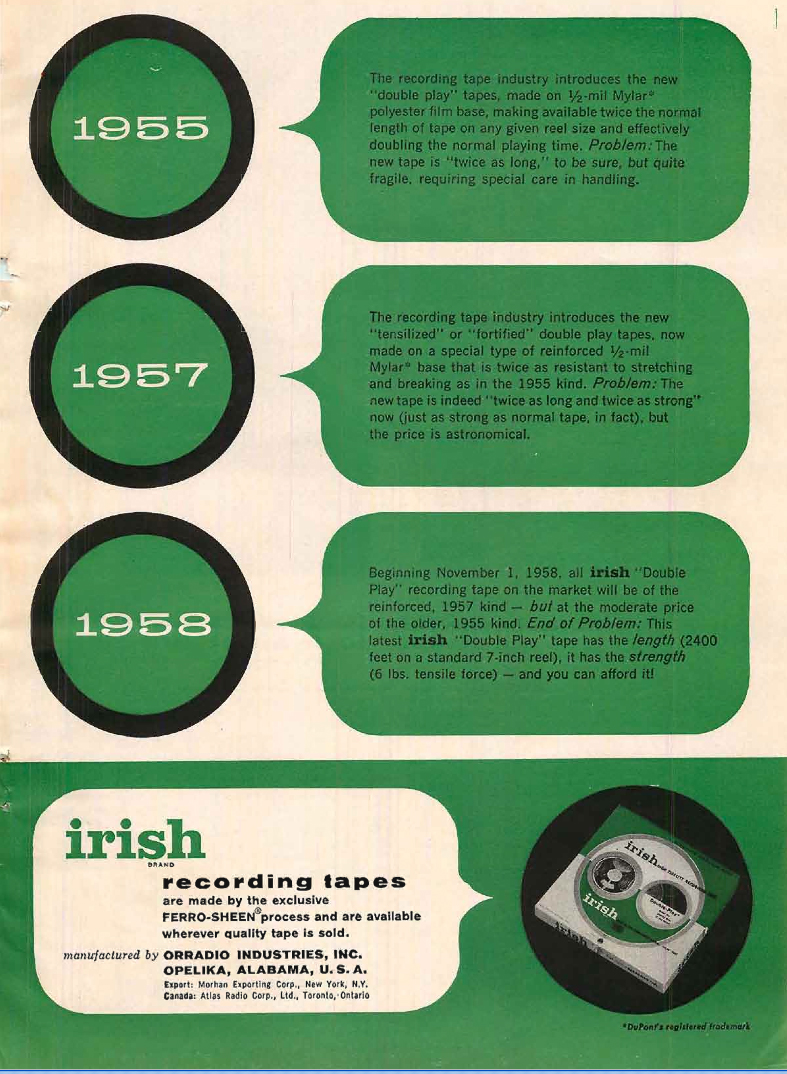
1958
|
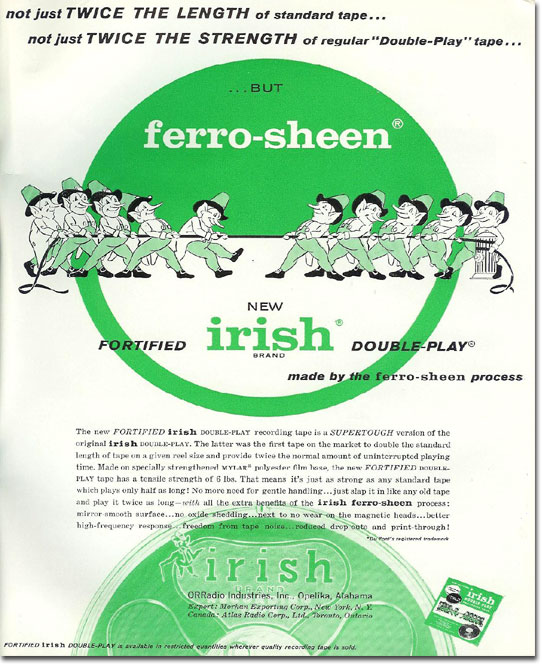
1958
|
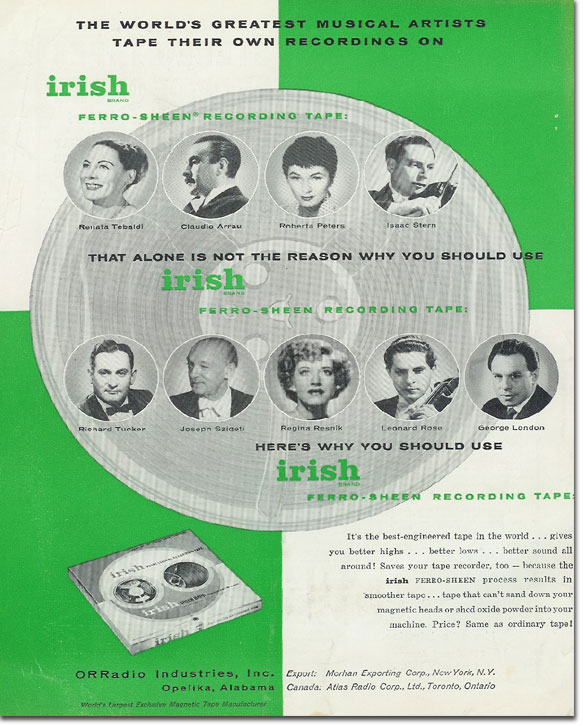
1959
|

1959
|
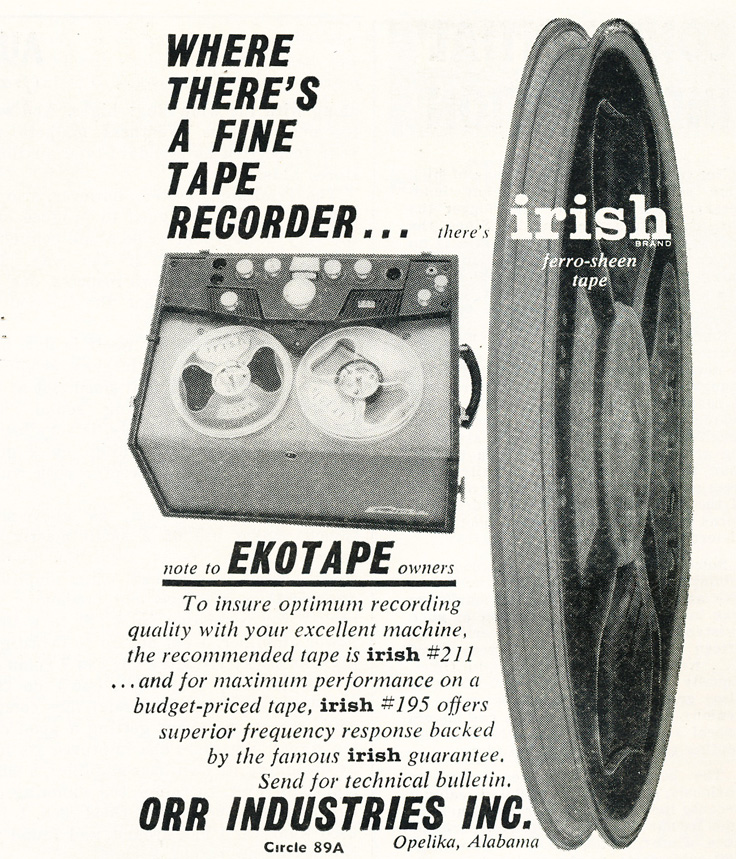
1959
|

1959
|

1959
|
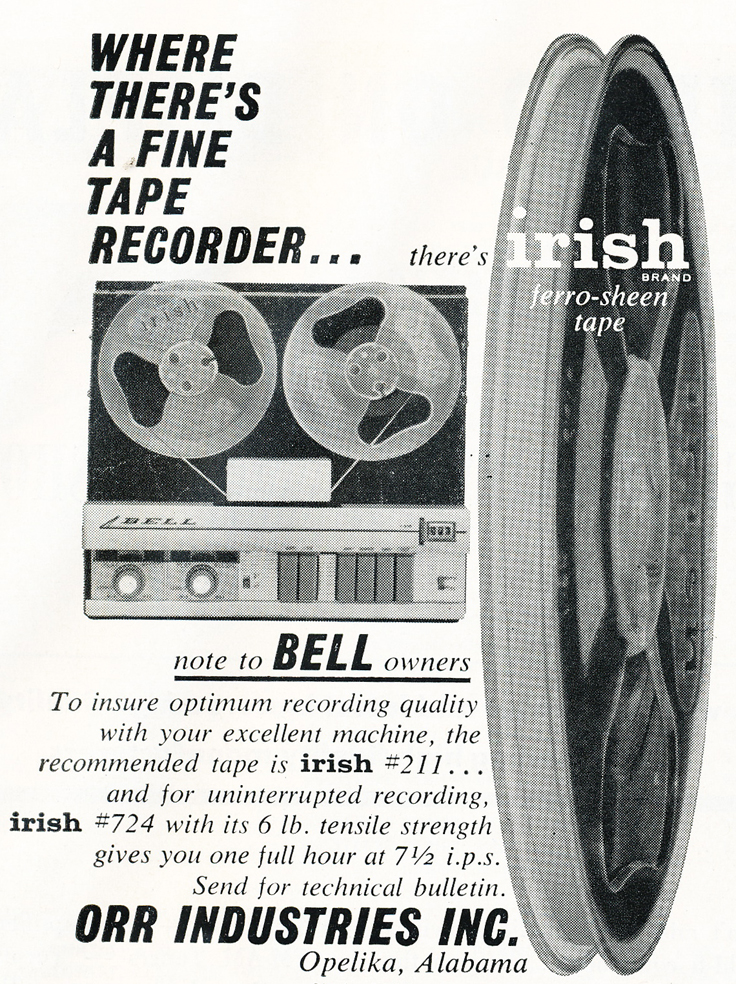
1959
|
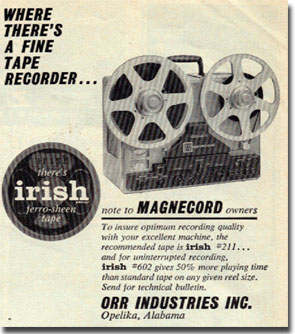
1960
|
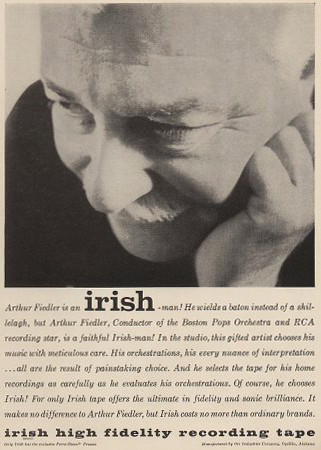
1960
|
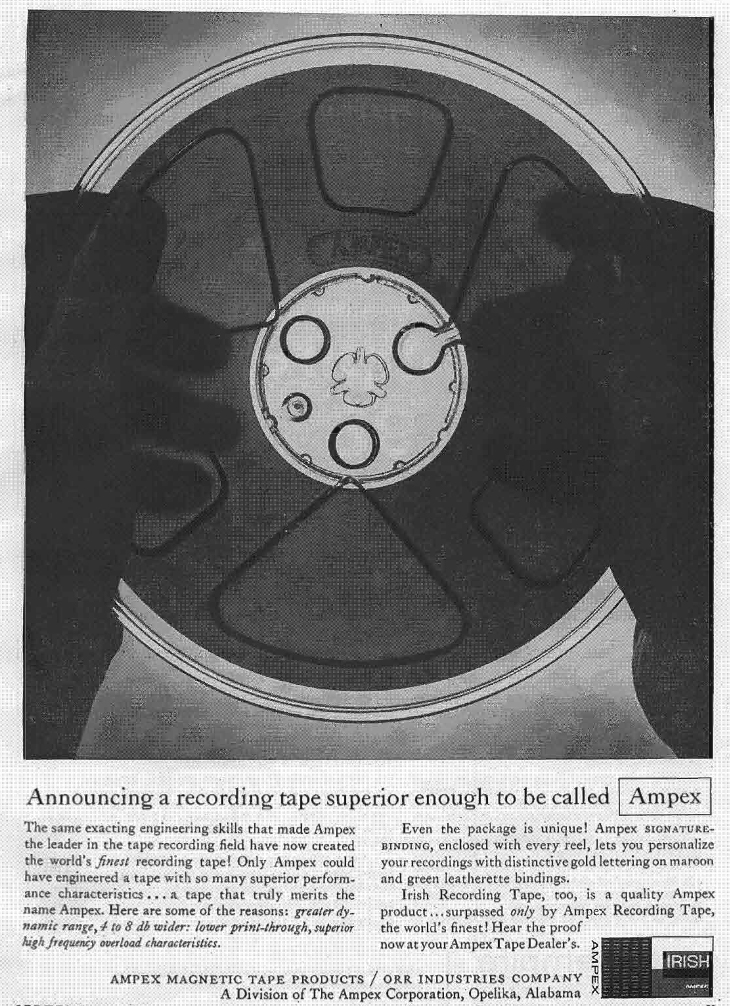
1960
|

1964
|
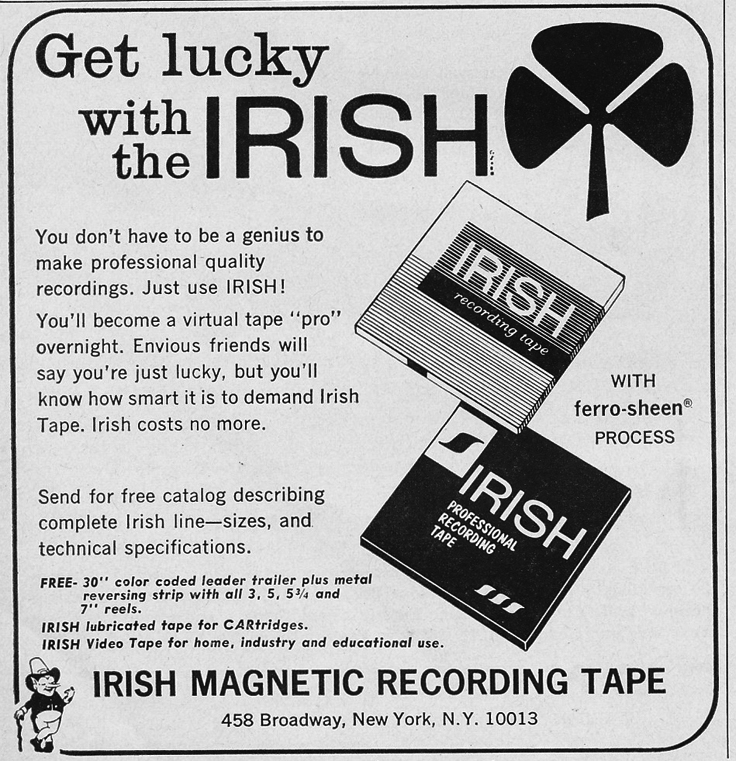
1966
|

1966
|
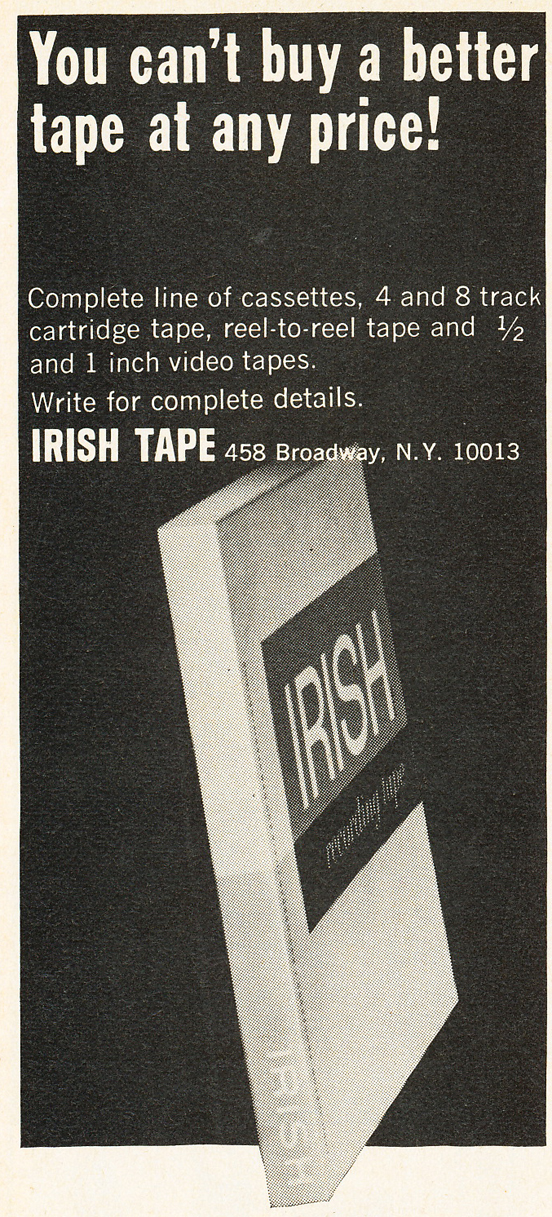
1968
|

1968
|
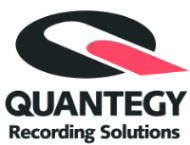 Quantegy Recording Solutions was a manufacturer of magnetic tape and professional external hard drives based in Opelika, Alabama. Their tape products were primarily used in analog audio and video recording studios, but they also have some use with digital data storage devices and instrumentation recorders along with some audiophile home hobbyists.
Quantegy Recording Solutions was a manufacturer of magnetic tape and professional external hard drives based in Opelika, Alabama. Their tape products were primarily used in analog audio and video recording studios, but they also have some use with digital data storage devices and instrumentation recorders along with some audiophile home hobbyists.
The company was created at the end of World War II by Major John Herbert Orr as Orradio Industries. This was a result of the US Army requiring an American supplier of magnetic tape. Magnetic tape was a German invention and after the war, the German manufacturing ability was destroyed.
In 1959, Ampex acquired Orradio Industries and it became the Ampex Magnetic Tape Division.
In the late 1980's Ampex Corporation Magnetic Tape Division is spun off as Quantegy Recording Solutions. Seconds brands are Irish and Shamrock. These tapes are either overruns of first quality tape, instrumentation tape, or rejected tape which didn't meet specifications for output, coating quality, slitting, or other issues.
In 1995, Ampex divested this division, then called the Ampex Recording Media Corporation. At the same time, 3M was also spinning off its magnetic media division. Equitable Life Insurance acquired these combined entities , which became Quantegy, Inc., and later changed its name to the current Quantegy Recording Solutions, with the Ampex product line being the nominal survivor, although much use of the 3M technologies later found their way into Quantegy products including the high end GP9 tape.
In January 2005, having previously filed for bankruptcy protection, Quantegy closed its manufacturing facility in Opelika. This event received substantial media attention.
On April 18, 2005, Quantegy resumed operations under new ownership. In January 2007, Quantegy announced that it will cease production of magnetic tape in April 2007 and is taking orders up until February 22. The only remaining manufacturers of new magnetic tape for sound recording are RMGI and ATR Magnetics.
In April 2007, Reel Deal Pro Audio purchased the majority of Quantegy's reel to reel audio tape and accessories and began to sell it on their web site Reel Deal Pro Audio.
In June 2007, Quantegy ceased sales of the FHD and Black Diamond FHD3 series of hard drive products to the professional audio recording industry.
As of 2009, Quantegy was working on reviving Quantegy 456 Studio Mastering Tape, Quantegy 499 Gold Studio Mastering Tape, GP9 Platinum Studio Mastering Tape, as well as the Black Diamond Series of products. But as of 2012, no progress had been made. Most of the tape production facilities were sold or dismantled following the 2007 bankruptcy. Thus a third revival of [new] Quantegy products looks to be in much doubt.
Rangertone's tape was slightly over 7 millimeters (1/4 of an inch wide), similar to the German 6.5 millimeter tape and used essentially the same oxides, binders, and tape base. After a short time, however, Ranger sold his tape coating apparatus to his friend John H. Orr in Alabama. Orr used this equipment as the basis of Orradio Industries, but it was only in 1949-50 that he was ready to market his "Irish" brand tape.434 Orr's business expanded quickly, allowing him to upgrade his production facilities several times in the next five years. He switched from coating tape on kraft paper, which was all he could afford in 1949, to the German-style acetate, and when he had used up the supplies he brought from Ludwigshafen, he purchased quantities of magnetic oxide from sources in Germany. Later, Orr responded to inquiries from the Pennsylvania chemical company C. K. Williams, which had by then begun supplying several tape manufacturers with an improved oxide.
This business of oxides was less important to Orr, who had little knowledge of chemistry, than to competitors like Armour Research, which had a patent on an identical oxide to that being sold by C. K. Williams. Only in the late 1950s would the issues related to the choice of iron oxide come to the fore. Meanwhile several other companies entered the field. In the tape field, the Minnesota Mining and Manufacturing [3M] company became the industry leader almost overnight. 3M had extensive knowledge of coated plastics from its adhesive tape line, and adapted this technology for coating tape. 3M entered the field first, coating tapes for both Armour Research and Brush Development before the end of the war. But what began as an experiment quickly became a new department within the company.
By contrast, the Audio Devices Company of New York apparently relied heavily on Commerce Department publications to enter the tape business. Audio Devices was a major manufacturer of transcription disks, and so had an interest in new sound recording media. The company set up its first research laboratory in the early 1940s and hired recording engineers and chemists to work on the problems of recording disks. This same staff used German documents and FIAT reports to formulate an audio tape during 1947 and 1948. By the spring of the following year, the firm announced its new product, which had the trademark Audiotape to complement the existing line of Audiodisks (the term audio tape has since become generic.
The History of Magnetic Recording in the United States, 1888-1978
A Thesis Presented to
The Academic Faculty
by
David Lindsay Morton, Jr.
"In 1945, after capturing several German 'Magnetophon' tape recorders from Radio Luxembourg, the American Signal Corps recorded a speech by Gen. Dwight Eisenhower to be played to the people of occupied Germany. Due to a shortage of recording tape, the speech had to be recorded on a reel of used German tape.
Due to a problem with the German tape recorder, the tape was not completely erased and the voice of Adolph Hitler was intermittently heard along with Eisenhower's voice. This caused a great deal of fear and confusion among the German people and obviously a great deal of embarrassment for the Allied Signal Corps.
Gen. Eisenhower issued an immediate order that no more captured German tape was to be used and assigned Maj. John Herbert Orr to develop an American magnetic tape manufacturing facility.
Maj. Orr located a German scientist, Dr. Karl Pfleumer, who gave him a basic formula for magnetic tape. Within two weeks, Maj. Orr had managed to manufacture his first reels of usable audio tape. After returning to his home in Opelika, Alabama, Orr set up a magnetic tape manufacturing facility and soon afterwards began marketing his own tape under the "IRISH" brand name. Orr continued his manufacturing operation and in 1959, Orradio Industries became part of the Ampex Corporation.
Founded by Alexander M. Poniatoff, The Ampex Corporation had been developing audio tape recorders since the end of WWII starting with its model 200. The company's first sales of the Model 200 were to Bing Crosby Enterprises and the American Broadcasting Corporation (ABC). In 1956, Ampex announced a historic breakthrough - the first practical video tape recorder.
Shortly after this introduction Poniatoff and Orr entered into negotiations and in 1959, Orradio Industries became the Ampex Magnetic Tape Division of Ampex Corporation. In November of 1995, the Ampex Recording Media Corporation was put up for sale, and the recording media pioneer became Quantegy Inc., according to www.quantegy.com
Tamiko Lowery
Staff Writer, Opelika-Auburn News
Sunday, January 2, 2005
Magnetic Recording LIFE Aug 19, 1957 - view full pdf
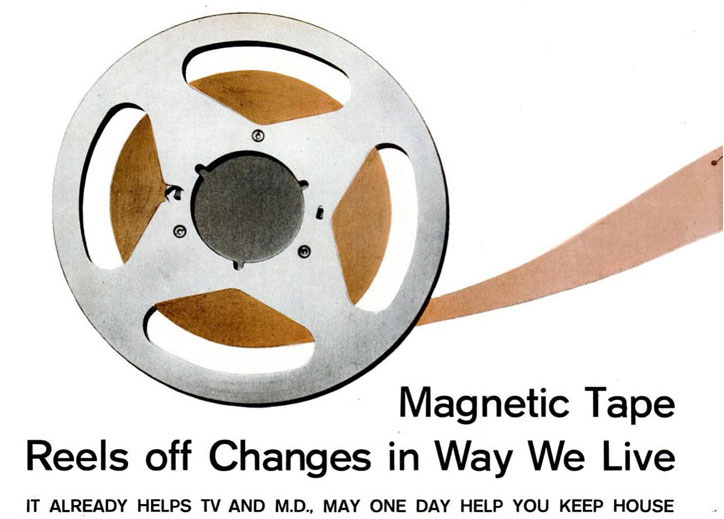
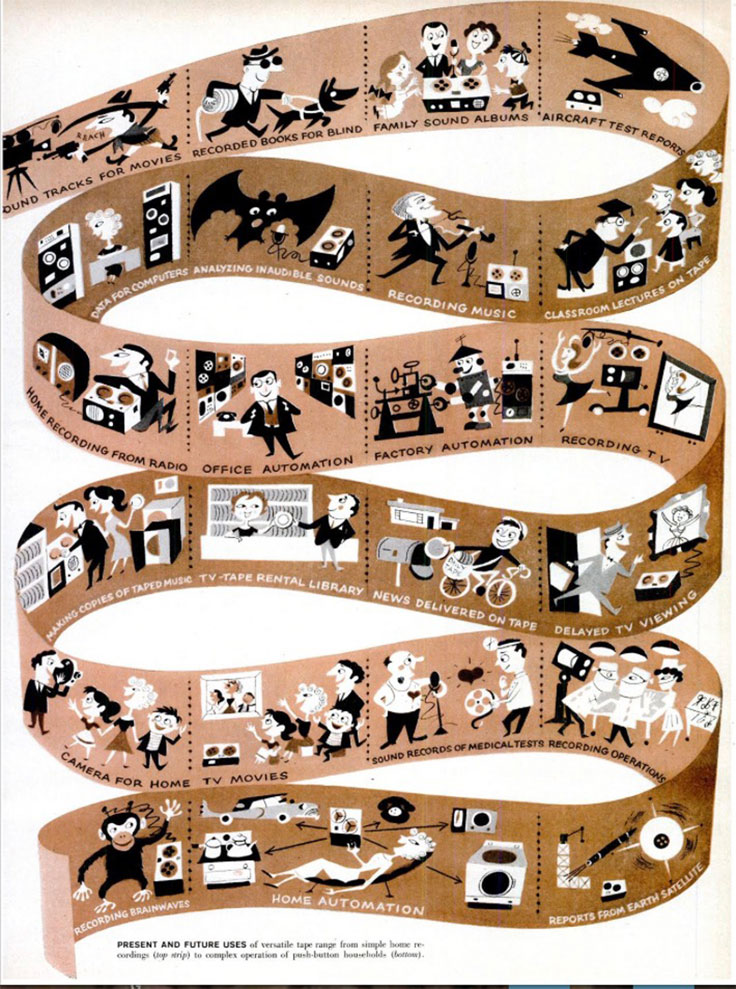
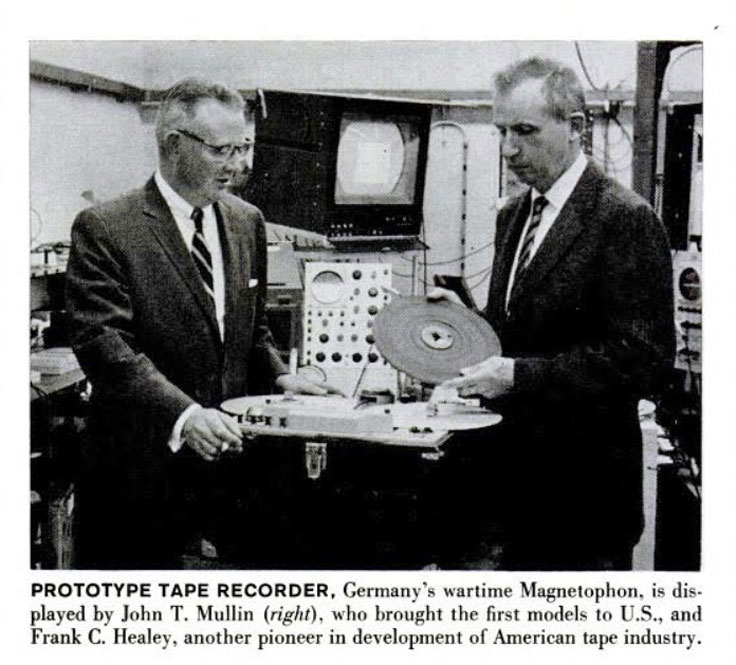
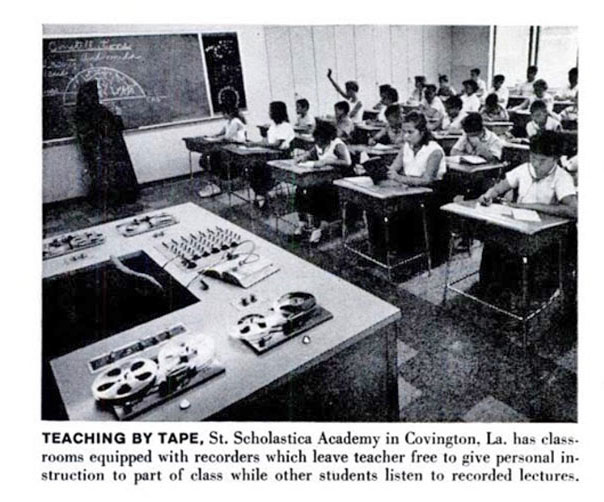
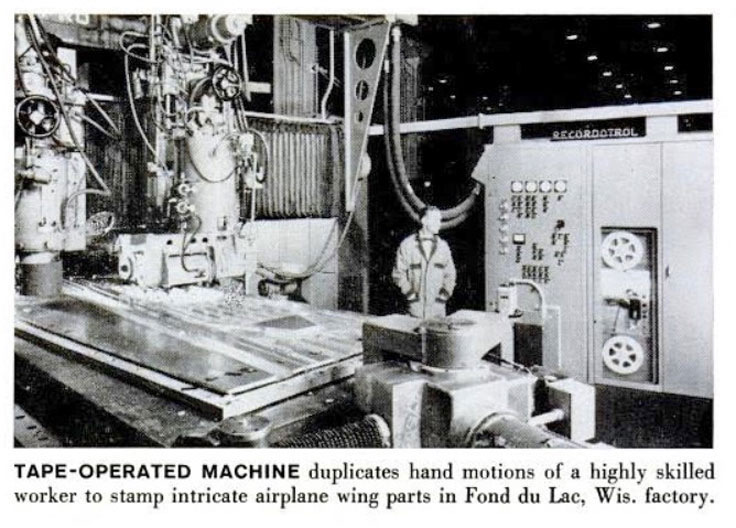
Magnetic Recording Tape Today
ATR Magnetics
US Recording
Other resources
Ampex tape list
3M Tape Chart
Back to the Ampex main page
Care and handling of magnetic tape
Tape - baking
Tape Tape
All recommendations of additional resources appreciated!










































 Quantegy Recording Solutions was a manufacturer of magnetic tape and professional external hard drives based in Opelika, Alabama. Their tape products were primarily used in analog audio and video recording studios, but they also have some use with digital data storage devices and instrumentation recorders along with some audiophile home hobbyists.
Quantegy Recording Solutions was a manufacturer of magnetic tape and professional external hard drives based in Opelika, Alabama. Their tape products were primarily used in analog audio and video recording studios, but they also have some use with digital data storage devices and instrumentation recorders along with some audiophile home hobbyists.



